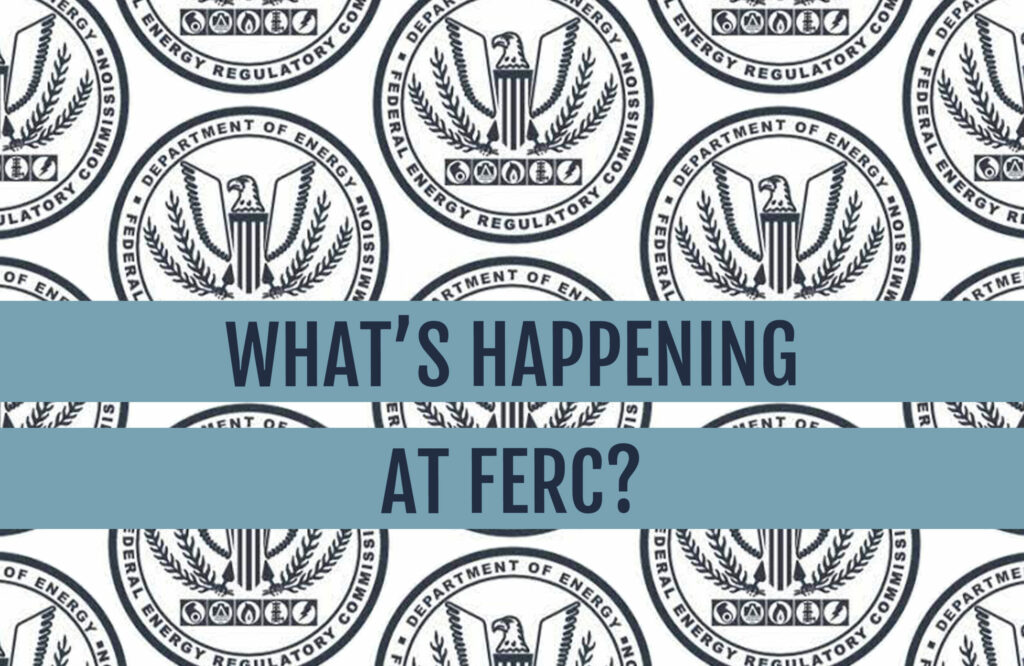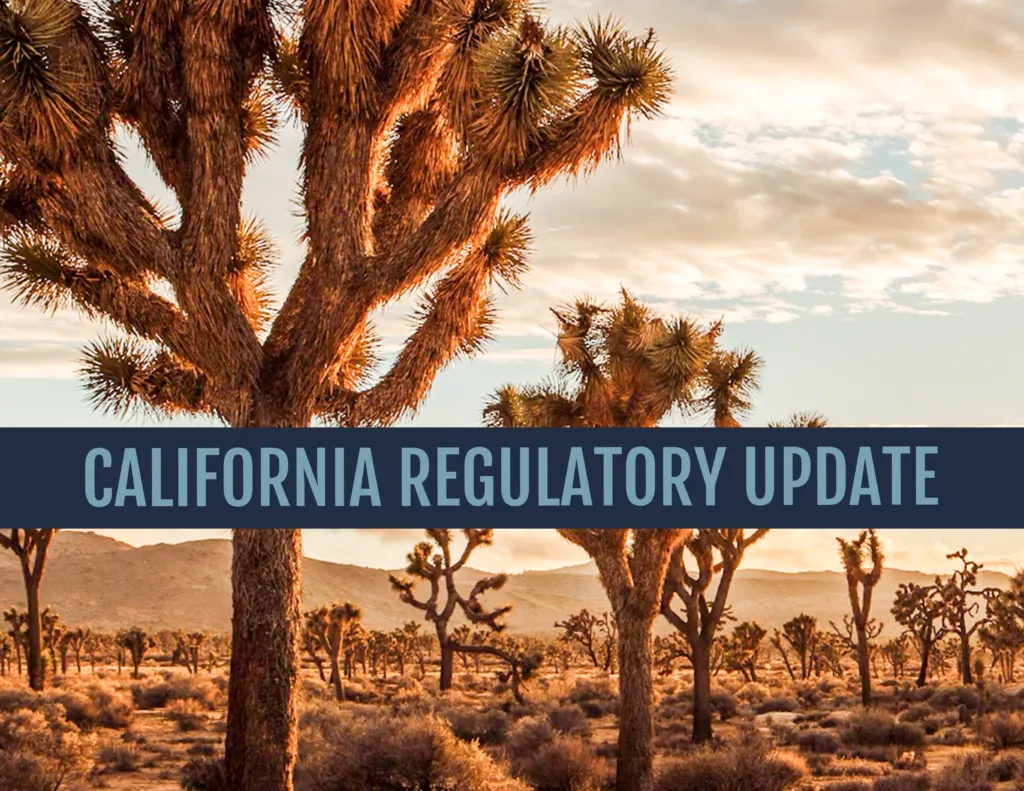SPRING 2021, PART II

As anticipated, policy changes and decisions are coming quickly at the Federal Energy Regulatory Commission (FERC or Commission) that may potentially affect the FERC’s environmental review process for construction of new and expansion projects. These changes may affect targeted in-service dates and permitting schedules. Insignia Environmental has been closely following developments at FERC and has the following updates.
Office of Public Participation Update
On June 24, 2021, FERC submitted a Report to Congress on its efforts to establish the Office of Public Participation (OPP). The Commission intends to grow the office over the course of a 4-year period before reaching its full operating status by the close of Fiscal Year (FY) 2024. By the end of FY 2021, it plans on hiring an OPP Director and associated staff. The purpose of the OPP is to assist with coordination between the public and the Commission, including assisting members of the public who seek to intervene in FERC proceedings. More details about the background and creation of this new office at FERC are outlined in Insignia’s previous blog post.
According to FERC’s Report to Congress, “Comments received about establishing the OPP indicate that members of the public—especially communities underrepresented before the Commission—need OPP to assist with participation in Commission proceedings. Commenters emphasized that this assistance would help place communities on equal footing with well-resourced industry stakeholders, particularly in proceedings involving natural gas pipeline projects and electric matters under the Commission’s jurisdiction. To achieve these goals, commenters suggested that OPP serve the following functions:
- conduct outreach;
- provide public education;
- provide procedural assistance to intervenors and participants in individual proceedings;
- provide technical assistance;
- recommend improvements for public participation in all the Commission’s program areas; and
- provide intervenor funding.”
FERC indicates that in carrying out these functions, OPP will work closely with the Commission’s Office of External Affairs intergovernmental advisor, the Office of General Counsel including the Senior Counsel for Environmental Justice and Equity, and the Office of Energy Projects, amongst others. Collaboration within these FERC offices will better ensure that the concerns of tribal members, environmental justice communities, and other historically marginalized communities are fully and fairly considered in Commission proceedings.
FERC’s Waiver of the Water Quality Certification Requirements of the Clean Water Act
On September 11, 2020, the Environmental Protection Agency’s (EPA’s) final 2020 Clean Water Act (CWA) Section 401 Certification Rule became effective. The EPA’s rule changed the Water Quality Certification (WQC) application process and put provisions on the certifying authority—in most cases, the state—and modified the role of the federal licensing/permitting agency. In response to this rule, FERC issueda Notice of Proposed Rulemaking in the Federal Register on October 19, 2020 to amend its regulations to categorically establish a reasonable period of time for a certifying authority to act on a WQC request. The rule was finalized on March 29, 2021.
The final rule identified the changes for projects subject to FERC’s review, which included the EPA’s requirement for an applicant to request and hold a pre-filing meeting with the certifying authority regarding its proposed project and WQC application. According to EPA’s rule, an applicant must submit a request for meeting with the certifying authority at least 30 days prior to submitting its WQC application.
In addition, an applicant must now submit a copy of its WQC application to FERC at the same time it submits to the certifying authority, and must include nine components:
- project proponent/point of contact;
- proposed project description;
- identification of federal authorizations;
- location of potential discharges;
- methods to monitor and manage the discharge;
- list of all other permits;
- documentation of pre-filing request with state;
- statements certifying information is correct; and
- requested action date.
The applicant will also need to file with FERC documentation that the certification was received by the certifying authority.
The next step in the process includes FERC’s issuance of a Notice of Waiver Period for Water Quality Certification Application, as established in “Waiver of the Water Quality Certification Requirements of Section 401(a)(1) of the Clean Water Act”. This document puts the certifying authority on notice that if the certifying authority fails or refuses to act on the WQC request by the waiver date within 1 year of the date of receipt of the WQC request, then the agency’s certifying authority is deemed waived.
Once a certifying authority determines its WQC action (with or without conditions), FERC will provide public notice of outcome and notify the EPA of the decision. 40 Code of Federal Regulations Section 121.12 (c) of the EPA’s regulations allows the EPA to determine whether the discharge from the certified project may affect water quality in neighboring jurisdictions (i.e., adjacent or neighboring states). In that scenario, the EPA will issue a Notice to Neighboring Jurisdiction for “Grant of Certification.”
A neighboring jurisdiction may provide feedback under one of three scenarios:
- “no effect,” which is the default after 30 days with no response;
- “may affect,” in which the neighboring state has 60 days to determine whether the discharge will violate its water quality requirements; and
- “may affect,” in which the state has an objection.
If a state objects, FERC will hold a hearing regarding the objection.
It is important to note that FERC cannot issue a Notice to Proceed with Construction until the WQC process or EPA’s Neighboring Jurisdiction notification and hearing process is complete.
Preparation of an Environmental Impact Statement for Expansions to Consider Climate Change
In notices appearing in theFederal Register on June 3, 2021, FERC indicated that it would be issuing environmental impact statements (EISs) for five pending natural gas projects (per Section 7 of the Natural Gas Act) to address climate change concerns. Each of the pending applications is a proposed expansion that already received a favorable environmental assessment (EA) developed by FERC staff. FERC’s issued notices indicated that the new EISs will tier off the existing EAs and will be limited in scope to assist FERC in its consideration of the proposed projects’ contribution to climate change.
Each of the previously issued EAs concluded that the proposed project(s) “would not constitute a major federal action significantly affecting the quality of the human environment.” However, at FERC’s Open Meeting on May 18, 2021, and again on June 1, 2021, FERC Chairman Richard Glick and Commissioner Allison Clements issued partial dissents on grounds that FERC should have prepared an EIS to assess the risks of the projects’ greenhouse gas emissions or their effects on climate change. These dissents, in short, concluded that the National Environmental Policy Act (NEPA) requires an EIS for any impact that is “arguably significant” and that the previously issued EAs did not satisfy FERC’s obligations under NEPA.
This development is a precedent shift considering that these projects are expansions of existing natural gas systems and are modest in scale. Several comments have been filed by industry stakeholders questioning if FERC should be assessing the significance of such projects’ contributions to climate change. This new strategy will no doubt significantly increase the timelines for decisions on these projects, as well as the timelines for planning for future expansion filings. Insignia will continue to monitor this development.
Staying Notice to Proceed with Construction, Pending Rehearing
On May 4, 2021, FERC issued Order No. 871-B, which clarifies previously issued Order No. 871, announcing a general policy of staying Section 7 certificates during the rehearing period and pending FERC resolution of any timely filed request for rehearing. FERC described this policy as a compromise between competing interests, notably for stakeholders who wish to challenge a FERC decision before irreparable harm may occur and the project developers’ interest in proceeding once the project has obtained all necessary permits.
Order No. 871-B clarifies that FERC is precluded from authorizing natural gas pipeline companies to proceed with construction of approved pipeline projects until the earlier of either (a) the date that a qualifying rehearing request is no longer pending before FERC, or (b) 90 days following the date that a qualifying request for rehearing may be deemed denied by operation of law. FERC also limited the application of this rule to requests for rehearing that raise issues reflecting opposition to project construction, operation, or need.
Likewise, FERC clarified that the prohibition would not apply once a rehearing request has been denied by operation of law due to FERC inaction on the request for 30 days. FERC published a flowchart illustrating the application of Order No. 871, as clarified.
Insignia continues to monitor these FERC policy and regulatory changes and is available to assist and address any concerns with our clients.


